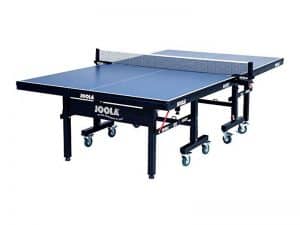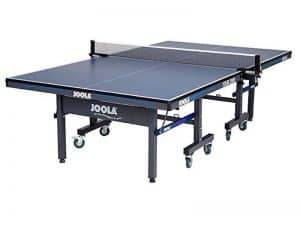103 Pickleball Terms To Elevate Your Game
- Alex Horscroft
- Last updated
New to pickleball, or just want to sound like a seasoned pro? Well, then this is the guide for you. We’ve scoured the pickleball-verse for all manner of pickleball terms to improve your communication skills on the court.
No longer shall “dink,” “volley,” and “kitchen” remain the extent of your pickleball terminology! By the end of this post, you should have picked up at least a few pickleball terms and phrases that you’ll be keen on using.
How Many Pickleball Terms Should You Know?

While we recommend fully immersing yourself in the pickleball scene and learning as much pickleball vocabulary as you can, you don’t really have to know many specialist pickleball definitions at all.
Besides pickleball words, you need to know that relate to the rules such as “fault” and “kitchen,” almost all the rest are entirely optional.
You should consider learning as many terms as possible because they will improve your ability to communicate with other pickleball players. They will also enhance your enjoyment of the game, which is all that really matters! So without any further ado, let’s crack on with the list!
Read More: How to Play Pickleball (The Hottest Game Going!)
103 Pickleball Terms to Improve Your Pickleball Lingo
Ace: A successful serve where the opponent does not make contact with the ball.
Approach shot: The ball is struck as the play approaches the net
ATP shot: An around-the-net shot. Only possible when the ball is played wide.
Backcourt: The back edge of the court, just in front of the baseline.
Backhand: A stroke where players strike the ball on the back face of their racket.
Backspin: A type of spin whereby the ball rotates backward rather than forward.
Backswing: The start of a stroke where you retract your paddle in anticipation of striking the ball.
Baseline: The rear line of the court which marks where the playable area for the ball ends.
Bounce it: A phrase to inform your partner to leave the ball. Used when the ball appears as if it will land out of bounds.
Carry: A shot with more dwell time than typical. Rather than rebounding off the face quickly, the ball stays on the paddle for longer than usual before release.
Centerline: The centerline which splits each half of the court in two. It begins at the non-volley zone and finishes at the baseline.
Champion shot: A shot that bounces twice in the non-volley zone.
Chop: A type of backspin shot that slices across the ball in a harsh downward motion.
Composite: A term used to describe a type of paddle that is made up of many different materials.
Cross-court: The neighboring diagonal area of the court.
Dead ball: A term used to describe the ball when a fault has been called — it is no longer live.
Dillball: A live ball that has bounced once.
Dink shot: A short shot that bounces in the non-volley zone where you cannot volley it.
Double elimination: A style of tournament where you have to lose twice to be eliminated. It consists of a winners and losers bracket.
Doubles: The most common way to play pickleball with two teams of two players.
Double hit: Striking the ball twice rather than once. If unintentional, the shot is legal, if intentional, it is illegal.
Down-the-line: A wide ball that travels close to and almost parallel to the sideline.
Drills: Tailored training exercises to improve your skills.
Drive: A fast groundstroke that you play fairly deep.
Drop shot: A soft and precise shot that kills the pace on the ball and causes it to land in the non-volley zone. Frequently players use this term when striking the ball from deep in the court.
Drop spin: A type of backspin shot where the forward momentum of the ball suddenly drops on impact with the ground.
Ejection: The removal of a player from a competitive event due to improper behavior.
Erne: A pouncing shot where a player travels over the corner of the non-volley zone without stepping in it. This allows them to volley the ball while adhering to the rules of the non-volley zone.
Face: The area of the paddle which you use to strike the ball.
Falafel: A short shot with little power.
Fault: A fault is called when either team breaks a rule.
Flapjack: The word used to describe the first two strokes which must bounce before being struck due to the double bounce rule.
Flat face: A pickleball paddle when the face is perpendicular to the ground.
Flick shot: A shot where you flick your paddle after extending your arm to reach a very short ball.
Foot fault: A rule violation where a player steps in an area they are not allowed to. This can occur for serves where players step onto the baseline, or when players step into the non-volley zone to volley the ball.
Follow through: The forward motion of your paddle after making contact with the ball.
Forehand: A type of shot where players strike the ball on the inside face of the racket. Most players favor forehand over backhand as it is more powerful.
Game: A unit of measurement in pickleball. To win a game, a team must secure 11, 15, or 21, points before the opposing team (depending on the scoring system in use).
Grip: The method of holding your racket in your playing hand. Alternatively, the term can also describe a covering on your racket where you hold it.
Groundstroke: Any shot where contact is made with the ball after it bounces once.
Half volley: A type of groundstroke where you make contact with the ball just after it bounces.
Head: The top portion of the paddle which includes the face and edge.
Hinder: A circumstance that prevents play.
Honeycomb: A popular type of paddle core that resembles the formation of a honeycomb.
Kitchen: The colloquial term for the non-volley zone.
Junior: Pickleball players aged 7-19.
Line calls: A declaration of whether a ball lands in or out of the playable area.
Lob: A high and deep shot that forces the opponents back near their baseline, or perhaps even further.
Match: The term used to describe players/teams competing. To win a match, a player/team must win two out of three games.
Midcourt: The midpoint between the edge of the non-volley zone and the baseline.
Nasty Nelson: An attempt from the server to strike the ball into the partner of the receiver.
Nice get: A phrase used in many racket sports used to praise an unlikely return.
No man’s land: A term used to describe the midcourt. Due to its weak position, you shouldn’t stay here too long.
Non-volley zone (NVZ): The 7 ft area that is adjacent to either side of the net. While standing in this zone, all volleys are prohibited.
Overhead shot: A powerful shot that you strike from overhead.
OPA: Used to indicate that the second bounce has occurred meaning volleys are on the table.
Open face: The opposite of a closed face where the face is pointing toward the opponents
Paddle: The common name for the instrument you use to strike the ball. Otherwise known as a racket.
Paddle tap: An act of sportsmanship where competitors tap their rackets together after a game has finished.
Painting the line: A phrase used to describe a perfect down-the-line shot.
Passing shot: A shot that is carefully placed away from the opponent, preventing a return.
Permanent object: Anything physical that could interfere with play from lights to spectators.
Pickle: A verbal indication by the server that they are initiating their serve.
Pickleball Global: An organization that hosts tournaments and ranks players.
Pickled: The act of defeating an opponent without allowing them to score a single point.
Pickledome: The court where the championship match takes place.
Pickler: A enthusiastic pickleball player.
Poach: An advanced shot in doubles where one player leaves their position to unexpectedly strike the ball.
PPA: An acronym for the Professional Pickleball Association. They host the Pro Tour.
Put away: A kill shot.
Punch shot: A fast and short volley with very little wind-up.
Racket: A synonym for “paddle”.
Rally: A period of time when the ball is live.
Rally scoring: Earning points from successful rallies irrespective of who serves. This goes against traditional pickleball scoring.
Ready position: The ideal stance to prepare to strike the ball. Your feet should be at least shoulder-width apart, with your weight on your toes. Your racket should also be out in front of you with no favoritism for either your forehand or backhand.
Receiver: The player who will receive the serve.
Replays: For ambiguous points, the umpire may call for a replay which sees the point repeated.
Resetting: To divert a fast rally back to the kitchen.
Round robin: A style of tournament where each entrant faces off against one another.
Serve: An underhand shot that puts the ball into play. You only get one pickleball serve unlike in other sports, so avoid faults at all costs.
Server number: The order of the serving sequence, called after the score and indicated by either 1 or 2.
Server court: The rectangle of the court from where the server strikes the ball.
Service outside scoring: The traditional pickleball scoring system where players can only earn points if their team is serving.
Shadowing: The act of mirroring your partner to move as a cohesive unit. This footwork helps to cover the court well and prevent large gaps from forming.
Sideline: The side boundary of the court.
Side out: The act of switching serve after the serving team loses a point while each of the players were serving.
Skinny singles: A type of pickleball training where you only use half of the court — great for improving accuracy.
Slammers: Players who hit the ball very fast and often lack consistency.
Slice: A type of shot that produces either heavy backspin or sidespin.
Split step: The act of bouncing on the balls of your feet so that you are ready to return a ball wherever it lands.
Smash: A term used to describe a powerful shot with point-ending potential. Often struck from overhead, but not always.
Stacking: A technique in doubles where both players are stationed on the same side of the court before a regular return or return of serve.
Stroke: The motion of striking the ball.
Technical foul: A foul where the referee may away a point to the opposing team for poor behavior such as unsportsmanlike conduct.
Topspin: A type of spin where the ball rotates in a forward motion and kicks forward upon contact with the ground.
Two bounce rule: The rule that stipulates that both teams must allow the ball to bounce once when is in play. As such, the third strike is the first time a team can play a volley.
Transition zone: Another term to describe the midcourt.
Unattackable ball: A drop or dink that bounces too low to allow for a meaningful attack.
Unforced error: A mistake caused by your own actions rather than that of your opponent.
Volley: Striking the ball in mid-air before it makes contact with the ground.
Volley Llama: The act of volleying the ball while in the non-volley zone which is illegal.
WPR: An acronym for the World Pickleball Rankings.
WPF: An acronym for the World Pickleball Federation.
Read more: The Best Pickleball Paddles You Can Buy
Closing Thoughts

That sums up all the pickleball terms we could think of. It’s quite the list, so don’t feel you need to know most of these terms immediately. It certainly took us some time to become familiar with all 103.
Perhaps try picking out some of your favorite pickleball slang and jotting them down for future reference. You can always refer back as needed, and we’ll update the list if we think of any others!
Want to learn more about pickleball? Check out these other interesting reads:
- Pickleball Kitchen Rules (Made Simple)
- Pickleball Court Dimensions + How to Set Up Your Own Court
- The 25 Best Pickleball Gifts for Players
Freelance writer. Table tennis enthusiast. Lover of all things online. When I’m not working on my loop game I’m probably binge-watching some fantasy show.
-
Alex Horscrofthttps://pingpongruler.com/author/alex-horscroft/
-
Alex Horscrofthttps://pingpongruler.com/author/alex-horscroft/
-
Alex Horscrofthttps://pingpongruler.com/author/alex-horscroft/
-
Alex Horscrofthttps://pingpongruler.com/author/alex-horscroft/
Popular Products
Join our email list for exclusive reviews & the latest Ping Pong News
Sign up to our newsletter and stay up-to-date with the latest news in the ping pong world, and be the first to read our new product reviews. We promise, no spam


















